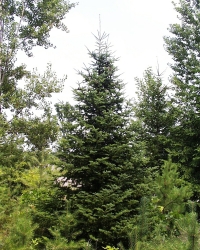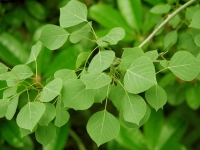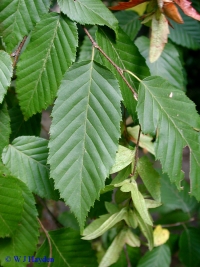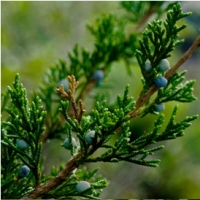
Native Tree Spotlight: Balsam Fir (Abies balsamea)
Living in Wisconsin, one can expect winters to be cold. Well, these last few days of frigid temperatures have tested even the hardiest Wisconsinites. I for one have been thanking my lucky stars for my fleece long johns and my wool sweaters, and I’ve been drinking more than my fair share of hot tea and coffee. Looking out of my window at our winter wonderland, I can’t help but wonder how our animal friends manage to keep themselves warm through the cold winter months. As we know, some hibernate, some migrate, and some don’t make it through the winter. Those that do stick around and survive make use of our coniferous trees for thermal cover and food. This month’s Native Tree Spotlight revolves around one of our more important wildlife cover trees, the balsam fir (Abies balsamea).
Fall Colors: How and Why?
I recently read Matt Flower’s awesome post entitled “The Beauty of Fall Trees” where readers got a great overview of the magic of fall colors. After reading his post and looking at his stunning photos, I got excited to do a “piggy-back post” about the science behind autumn colors. Read on to find out more about what changes trees undergo in the fall: why do leaves turn colors? How do they change color? Why do individual trees change to certain colors while others change to a completely different color?
Native Tree Spotlight: Quaking Aspen
This month we turn the spotlight onto a native tree that has a large and dedicated fan base, the quaking aspen (Populus tremuloides). Its fan base consists of hunters, recreationists, bunches of wildlife, and me! The trees have smooth pale bark scarred with black. The leaves are almost circular to triangular with little teeth all the way around the edge. They are glossy and green above, a dull whitish color on the underside, and turn a beautiful golden yellow in the fall. The petioles or leaf stalks are flattened instead of round, which causes the leaves to flap and flutter beautifully in the wind, hence the name “quaking” aspen.
Native Tree Spotlight: Musclewood
One beautiful and interesting native Wisconsin tree which will, like more than 70 other native tree species, be planted as a part of the Milwaukee Rotary Centennial Arboretum project is Carpinus caroliniana or musclewood. Musclewood is a relatively small, slow-growing, and short-lived tree which usually grows in the understory of our mixed-hardwood forests. The foliage, bark, and fruits are important food for lots of different songbirds, as well as squirrels, grouse, turkeys, foxes, cottontails, and beavers.
Native Tree Spotlight: Eastern Redcedar
One species of tree being planted as a part of the Milwaukee Rotary Centennial Arboretum project is the eastern redcedar or Juniperus virginiana. Redcedar is a beautiful coniferous evergreen tree with reddish, vertically fissured bark, interesting awl-and-scale shaped leaves and bluish berry-like cones. It is very important for many different types of wildlife.
Copyright © 2023 The Urban Ecology Center







